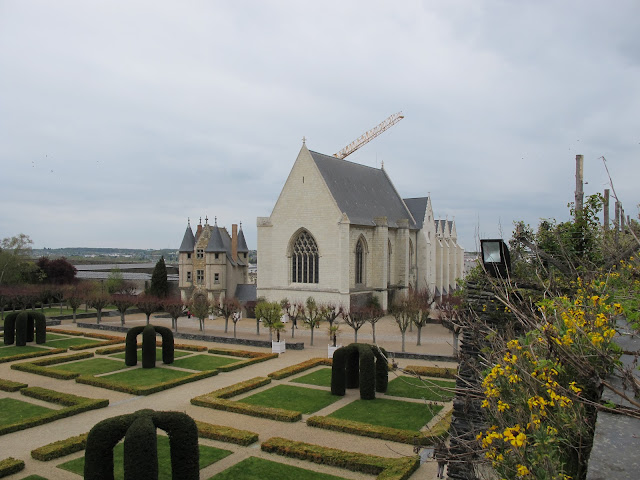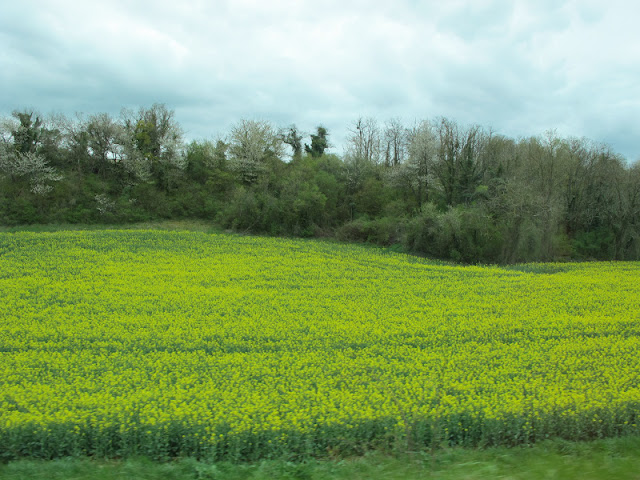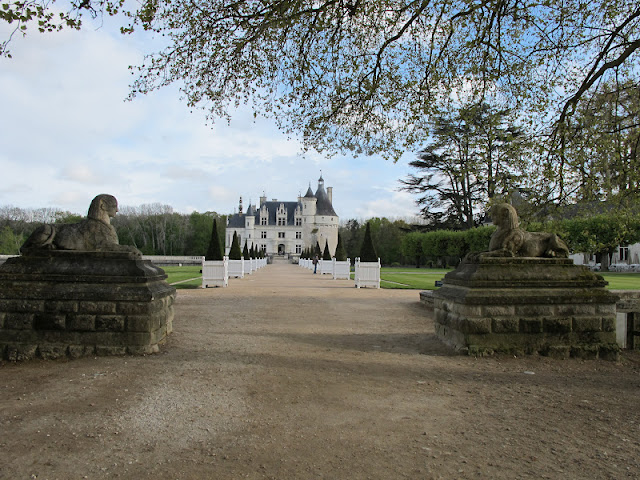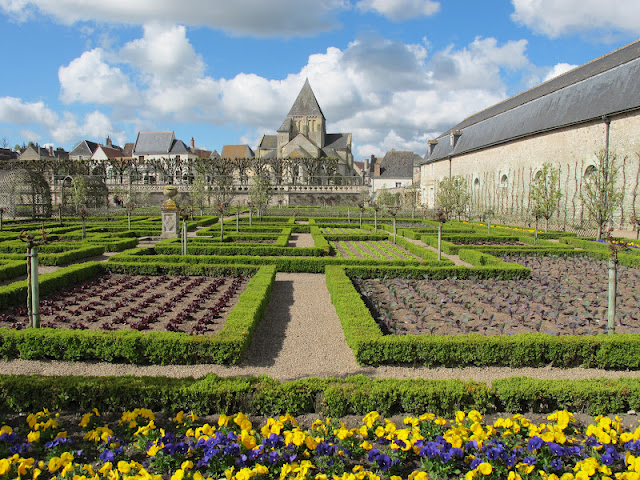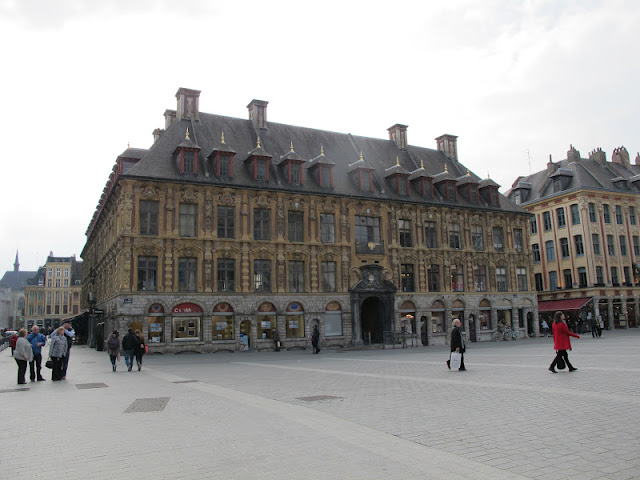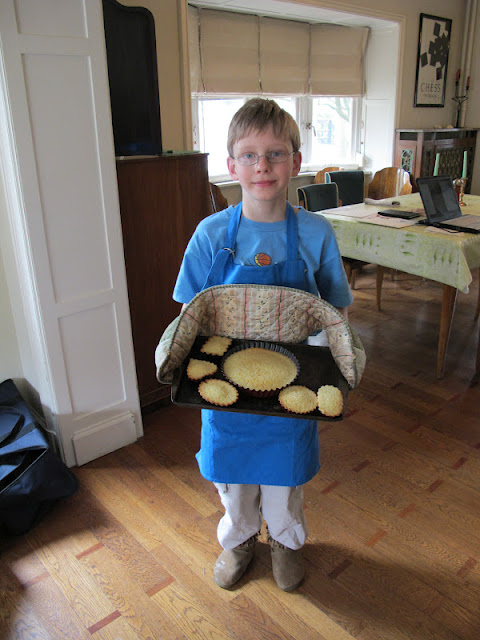Bill's trips have themes and stories. For Loire chateau trip, it was Women and Power in Renaissance France. Here's a summary from Bill:
Although French adhesion to the so-called "Salic Law" meant that no woman could, or ever did, inherit the throne in France, women occupying non-constitutional positions still exercised considerable power, possibly more than in countries where women could inherit the throne. This was particularly true in the renaissance period. Visiting these remarkable chateaux in the Loire valley gave us some insights into the stories they hold about women and power.
I love fast trains! We took the TGV from Brussels to Angers. From there we traveled in a rental car.
ANGERS
Our first base location was the Hotel de France, a family-owned hotel across from the rail station in Angers.
Angers: The Statue of Margaret of Anjou by our Hotel
This lady has been known around our house for years for her role in the Kingmaker board game Bill played for hours on end with all the local kids. Margaret was the daughter of Rene of Anjou, once King of Naples and a figure very popular in Angers, and the wife of King Henry VI of England, which made her Queen consort in England. She was a principal figure in the Wars of the Roses and at times personally led the Lancastrian faction. She ruled Henry VI's kingdom in his place during his bouts of insanity. She called the Great Council in May 1455 that excluded the Yorkists, igniting a civil conflict that lasted over 30 years. When the Yorkists defeated the Lancasters at Tewkesbury in 1471, she was taken prisoner. Ransomed by her cousin, King Louis XI of France, she lived in France until she died at age 52.
Angers: Chapel and Interior Gardens of Château d'Angers
Angers: Gardens in the Moat of Château d'Angers
Angers: Most of the chateaux had booklets for kids so that they could read about history and locate certain special items in the museums. Henry and Pamela worked diligently, and successfully, on these. Since we were at Angers on Easter Sunday, the prizes were provided by a chocolate company.
Angers: Moat and Wall of Château d'Angers
Angers: Restoration
As one might imagine, restoration is an ongoing process.
AZAY-LE-RIDEAU
Our other hotel was the Hotel Grand Monarque in Azay-le-Rideau
Chateau Azay-le-Rideau
We didn't go inside all the chateaux we saw, but still took some pictures from outside. We took this picture from outside the fence. The chateau is actually on an island, and from the other side, the foundations rise right out of the River Indre. Built
from 1515 to 1527, this was one of the earliest French Renaissance châteaux. Gilles Berthelot,
Treasurer-General of the Finances of France under King Francis I and mayor of Tours, began
reconstructing Azay-le-Rideau's earlier medieval castle, which was part of his
wife's inheritance. However, it was his wife, Philippe Lesbahy, who directed
the course of the works.
Azay-le-Rideau: In the courtyard between our rooms and the restaurant and reception of Hotel Grand Monarque was this vintage bathtub. What vintage? I have no idea. But it has to be vintage.
The tufa rock around Azay-le-Rideau is soft enough to carve. We saw quite a few troglodyte homes and ate dinner in a cave restaurant, Restaurant les Grottes
CHINON
Château de Chinon is located on the bank of the Vienne river. It was founded by Theobald I, Count of Blois in the 10th century and in the
11th century the castle became the property of the counts of Anjou. It changed hands frequently, underwent a siege in the 13th century, and was used as a prison for Knights Templar leaders accused of heresy in the 14th Century. The
chateau was used by Charles VII in the 15th century. Here is where
the peasant girl Joan of Arc recognized the dauphin, Charles VII, who had
exchanged clothes and locations with another man. The people in the room intended
to laugh at her when she spoke to the imposter, but she actually recognized the
dauphin. The Château de Chinon became a prison in the second half of the
16th century, but then fell out of use and was left to decay.It has recently been partially restored.
Chinon: The Clock Tower
Chinon: The Royal Apartments
Chinon: Tour (Tower) du Moulin
Chinon: View from the chateau of the RiverVienne
When we were in Southern France last July, we saw endless fields of beautiful yellow sunflowers. This spring, in the Loire valley, we enjoyed miles of blooming rapeseed, which is used for safflower oil.
SAMUR
This was our view of the Château de Saumur from the cafe where we stopped for lunch. We did not go inside. Like Chinon, the chateau was originally constructed in the 10th century by Theobald I, Count of Blois, as a fortified stronghold against the Normans.
It overlooks the confluence of the Loire and the Thouet Rivers. In 1026 it came into the hands of Fulk Nerra, count of Anjou, who
bequeathed it to his Plantagenet heirs. Following its destruction in 1067, the château was
rebuilt by Henry II of England in the later 12th century.
CHENONCEAU
First mentioned in writing in the 11th century, The Château de Chenonceau was built as a manor house on the site of an old mill on the River Cher. It's been burned, destroyed, and rebuilt a number of times. When it came into the hands of Thomas Bohier, he destroyed the existing castle and built an entirely new one betewen 1515 and 1521. His wife Katherine Briçonnet sometimes oversaw the work. Bohier's son lost it for unpaid debts to King Francis I. After Francis' death in 1547, his heir, Henry II gave it to his mistress, Diane de Poitiers, who eventually owned the chateau, had the arched bridge built connecting the chateau to the other side of the river and planted extensive gardens. After King Henry II died in 1559, his widow and regent Catherine de' Medici had Diane removed by forcing her to exchange it for the Château Chaumont. Queen Catherine then made Chenonceau her own favorite residence. Bought and sold a number of times, came into the hands of the Menier family in 1913. They still own it. During World War I the gallery over the bridge was used as a hospital ward. During the World War II it was a means of escaping from the Nazi occupied zone on one side of the River
Cher to the "free" zone on the opposite bank.
Chenonceau: Catherine de Medici's Bedroom
Chenonceau: Diane de Poiters' Bedroom
Chenonceau: Formal Garden and West Side Residence
Chenonceau: The Long Road to the Chateau and Lions
Chenonceau: Henry in One of Several Kitchens
Chenonceau: West Facade and Diane's Bridge over River Cher
Chenonceau: The Gallery--The Bridge on the Inside
LOCHES
Château de Loches, with its massive square keep, stands above the Indre River. It was designed and occupied by Henry II of England and his son, Richard the Lionheart during the 12th century. Like the other chateaux, it went through various assaults and changes of ownership over the centuries. Loches is another Joan of Arc shrine. It was here that Joan persuaded the Dauphin to go to Reims to be crowned Charles VII, King of France. The castle would become a favorite residence of Charles VII, who gave it to his official royal mistress, Agnès Sorel, as her residence. She bore him three daughters before dying of mercury poisoning while pregnant with their fourth child at the age of 28. The castle would be converted for use as a State prison by Charles VII's son, King Louis XI who had lived there as a child but as an adult preferred the royal castle at Amboise. During the American Revolution, France financed and fought with the Americans against England and King Louis XVI used the castle of Loches
Loches: Agnes Sorel
Loches: Agnes Sorel
Loches: Collegiate Church of St. Ours
Loches: Top of the Keep
Loches: Royal Lodge
Loches: Recumbant Statue of Agnes Sorel in St. Ours
Loches: St. Ours
Loches: Jeanne d'Arc in St. Ours
Our friend Jean Grant pointed out last summer that many French churches have a Joan of Arc, and she enjoys locating them. We have since taken up that practice as well. Sometimes she's in statue form; other times she appears in stained glass.
AMBOISE
The Château at Amboise began its life in the eleventh century, when the notorious Fulk Nerra, Count of Anjou, rebuilt an earlier stronghold in stone. King Francis I was raised at Amboise
Amboise: Chapel of St. Hubert
Amboise: Château d'Amboise
Amboise: Wall, Village, and River Loire
BLOIS
Built in the middle of the town that it effectively controlled, the château of Blois comprises several buildings constructed from the 13th to the 17th century around the main courtyard. The architectural styles represented in the Château de Blois are quite distinct. It was the residence of several French kings. King Henry III, driven from Paris Blois
Blois: Catherine d'Medici (Portrait on the Wall) died here
Blois: Chapel
Blois: Interior façades in Classic, Renaissance, and Gothic styles (from left to right)
I couldn't get far enough away to get a picture of the whole Blois interior courtyard, so I am using this picture from Wikipedia to show the different architectural styles.
Blois: Classic Architecture from Gaston d'Orleans--1635-1638
Blois: Gothic Style from Louis XII--1498-1503
Blois: Renaissance Style from Francois I--1515-1524
VILLANDRY
The lands where an ancient fortress once stood were known as Colombier until the 17th century. Acquired in the early 16th century by Jean Le Breton, France's Controller-General for War under King Francis I, a new château was constructed around the original 14th-century keep where King Philip II of France once met Richard I of England to discuss peace. During the French Revolution the property was confiscated and Napoleon acquired it for his brother, Joseph Bonaparte. In 1906, Joachim Carvallo purchased the property, restored it, and created its beautiful gardens of flowers, vegetables, fountains, and waterfalls. A maze created with low box hedges offers fun for children. It is still owned by the Carvallo family.
Chateau de Villandry: Canal and Arbor
Chateau de Villandry: Garden
Chateau de Villandry: Bill and Jean at a Fountain
Chateau de Villandry: Henry and Pamela at a Fountain
Chateau de Villandry: Vegetable Garden
USSE
The location of Château d'Ussé was first fortified in the eleventh century by the Norman lord named Gueldin de Saumur, who surrounded the fort with a palisade on a high terrace. The Comte de Blois later rebuilt it in stone. Like the other chateaux, it had its share of modification, rebuilding, and change of ownership. In 1462 Antoine, the son of the owner, Jean V de Bueil, married Jeanne de Valois, daughter of Charles VII and Agnes Sorel. Antoine was heavily in debt, despite Jeanne's dowery of 40000 golden écus, and he sold the chateau. The tradition maintained at Ussé is that this was the castle Charles Perrault had in mind when writing "Sleeping Beauty". In 1885 the comtesse de la Rochejaquelein bequeathed Ussé to her great-nephew, the comte de Blacas. Today the château belongs to his descendant. Usse is also supposed to be one of several that inspired Walt Disney in the creation of many of the Disney Castles.
Château d'Ussé: Castle,Tulips
Château d'Ussé: Chapel
Château d'Ussé: The Attic
I can't believe they invite people into the attic, but we did crawl up here. It was fascinating to see the construction, but the dirt, dust, mouse droppings, and junk, junk, junk...A real intimate look, I must say.
Château d'Ussé: The rooms were done up beautifully, complete with life-like wax figures.
Château d'Ussé: Some of the rooms represented chateau life, such as the dining room and king's bedroom.
Château d'Ussé: Other rooms depicted the entire Sleeping Beauty story. Here Prince Charming awakens the princess after her 100 year sleep.
LILLE
When Pamela made the train reservations for our journey back to Brussels, she found that the end of Easter break was quite a busy travel time. We had to change trains in Lille, and the two were completely booked. This resulted in a five-hour layover, during which we had time for some beverage stops and a good look around the old city. The wait turned into a bonus.
Lille: Chamber of Commerce.
Lille: Gare Europe
The top of the rail station is shaped like an L for Lille.
Lille: Grand Place
Lille: Old Stock Exchange (VieilleBourse) Interior
A flea market of sorts is located in the arcade on the interior courtyard.
There were plaques along the wall recognizing Lille's famous.
Lille: Old Stock Exchange (VieilleBourse) Exterior
BACK HOME IN BRUSSELS
Before heading back to Ripon, we spent some much-needed down time simply absorbing and re-enjoying the previous two weeks in Russia and France. On our last night we enjoyed take-out sushi from a neighborhood shop, which we are making a tradition. These delicious desserts--created from start to finish by the chef pictured below--topped off the meal.


